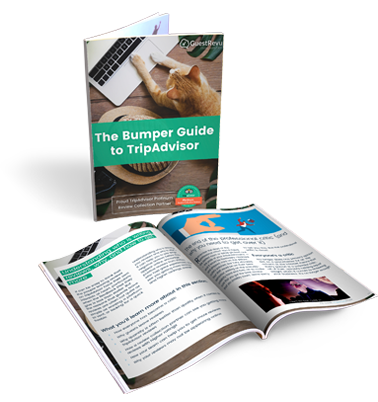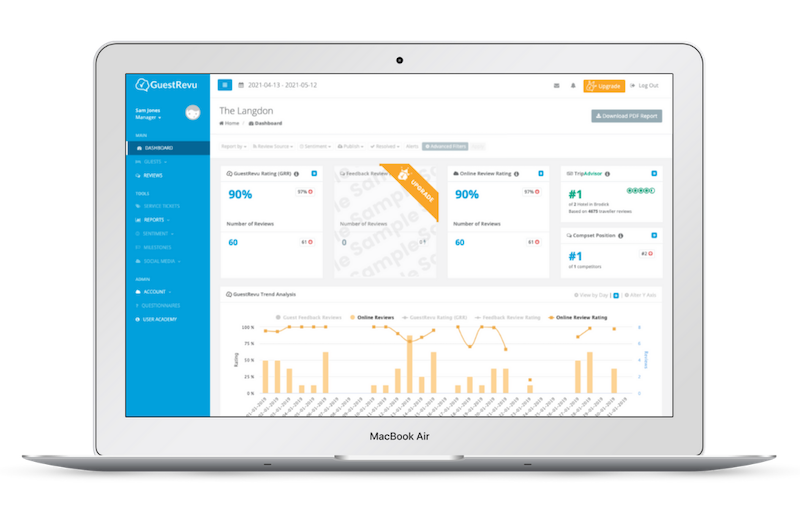Imagine a keen traveller in the days before the internet looking for a place to go and explore. They saunter into a travel agent’s office and look at a wall of around 50 brochures. Which one do they choose? how long do they continue to look at it? What makes them take that brochure home and phone the hotel to place their booking?

Now we have the internet and we have hundreds of thousands of those prospective travellers, sauntering (virtually) through millions of digital brochures, or websites. How can you make yours stand out from the crowd? How do you keep your guests attention? And most importantly how do you encourage them to book with you?
The answer is simple: really great website design.
While the answer may be simple, the execution can be more challenging, here are some tips to enhance your hotels' website and increase your direct bookings.
Make sure everyone can use your website – and make a booking
In the same way it’s impossible to experience your hotel the way a guest would, it’s also impossible for you to experience your website the way a prospective traveller might. You already know your property, your website, where to find certain information and what you are trying to say, so your view isn’t objective.
Ask people who are unfamiliar with your website to navigate it and try to perform certain actions, like booking a room or finding out what amenities your property offers. If your test users get lost, frustrated or confused, you have a problem. Ask your test users how you can improve the usability of your site, and listen to their advice.
Once you know where the functionality may be lacking, you can begin to correct the user journey. Generally, you would need to look at your ease of booking, which is your website's most important function. Ensure potential guests visiting your website have a frictionless booking journey with an integrated booking engine or property management system (PMS) with built-in booking capabilities. Important information should always be displayed “above the fold” (this means it is visible to the user without them having to scroll) and all the user’s attention should be directed towards calls to action to “search” and/or “book”.
The payment process is also often a point of friction for online bookers – most noticeably if this is the first time they are transacting through your website.
Potential guests’ feelings around online payment gateways may mean the difference between a direct booking or someone reverting back to a ‘trusted’ OTA to complete their booking. Put potential guests' minds at ease with guest-friendly cancellation policies which are clearly communicated. Use safe and secure payment gates and communicate the safety aspects of the sites to your guests.
Remember, if your booking process is too complicated, people will end up booking through an online travel agent (OTA) or even worse, at a competing hotel.
Make it easy to use on a mobile phone
Mobile optimisation used to be a nifty little trick that you found on cutting-edge websites – it was a treat not to have to scroll horizontally when you visited them on your phone. Now, mobile optimisation is like the indoor toilet, you expect it to be there. And, like indoor toilets, mobile optimisation is particularly important in the hospitality industry. According to Google, users are five times more likely to leave a website if it isn't mobile-friendly. Furthermore, statistics show that “94% of leisure travellers switch between mobile and desktop devices as they plan and book their holidays.”
So make sure your website is optimised for mobile, this includes a highly responsive layout design, optimised images, quick loading speeds, is easy to navigate with clear calls to action (book now) and easy-to-use booking calendars. A well-designed mobile site can even fulfil many of the functions of an app – if you get it right.
Check out the mobile-friendly cheat sheet for hotel websites
Make it eye-catching and visually appealing
First impressions count and your web design and aesthetics really matter. In fact, according to a study from Carleton University, it only takes website visitors about 50 milliseconds to assess your website’s visual appeal. This means you have to be quick to attract attention, showcase your property and communicate your unique brand message.
Travel is all about the feeling you get when you visit a new place, and if you can give visitors a taste of that feeling while they browse your site, they may well decide they want more.
When looking at the aesthetic design of your website, you need to ensure that each element or image accurately reflects your hotel, its atmosphere and your brand identity. When guests view your website, your social media, print media and the hotel itself, the impression should all be cohesive and familiar.
Your website should tell the story of your hotel through images, videos and copy. Show the beautifully made-up rooms, but also add some interest with behind-the-scenes images - your chef making their signature dish.
Let your images tell a story
While we are talking of website aesthetics, it is important, especially in the travel market, to ensure you have plenty of high-resolution images on your site and that they show your guests what they want to see. Of course, there should be pictures of the rooms and pictures of the bathrooms – which is what potential guests are probably most concerned about when booking accommodation – but you should also show prospective guests what your property feels like. Show them the reception, the lounge, the gardens or the restaurant, or whatever else makes your property unique. You can even include images of your surrounding area, town or location.
If you need inspiration for how to use images effectively, e-commerce sites (sites that sell physical products online) are the masters at getting users to click “buy now”. E-commerce expert, Rodney Laws, has shared some of his top tips with us before, some of the most important of which are:
- Include Diagrams
In addition to beautiful images of the rooms and communal spaces, it can be beneficial to include diagrams of layouts of the hotel, the rooms or anything else of importance. This gives the guest an accurate idea of what they can expect when they book
- Include video walkthroughs
“One minute of video is worth 1.8 million words,” says Dr James McQuivey, research director at Forresters. Video is the perfect medium to inspire an emotional connection, and make your website visitors feel as if they are “actually there”.
- Show guests in situ
This is one of the main focus areas for online retailers but not something many hoteliers have necessarily embraced. Showing guests enjoying their time at your hotel enhances the ‘social proof’ aspect of marketing, it elicits a FOMO (fear of missing out) response and it helps guests connect with the hotel as if they were really there. Even better would be to encourage guests to make their own UGC (user-generated content) such as reshared and tagged holiday images, which is the most trusted form of content available to marketers.
Enhance your call-to-action (CTA)
A call-to-action (CTA) is absolutely essential for promoting direct bookings. A CTA guides a user through your site and encourages them to do something – in this case, make a direct booking. Your CTA should be easy-to-read, appear above the fold, and should use simple, active words that will encourage users to click through to your online booking form straight away. A top tip with a BOOK NOW button is to make it “sticky”, so that it stays fixed in an area no matter where or which page your viewer scrolls to.
Use your words wisely
Even if you have a responsive, aesthetically pleasing, image-friendly website with all of the functionality and direct booking CTAs in the world, ultimately your guests (and search engines) are directed by your words. Writing your website's copy needs careful planning and analysis into your guests' path to purchase – what is the point of each piece of copy, what does it need to convey and where should it lead your guest?
A few of the top tips from one of our own resident writers include:
- Avoiding cliches
Guests will have read all about the “breathtaking views”, and “vibrant cities” before, you need to give them something special and memorable to encourage a booking or a repeat website visit.
- Being specific
Not only will being specific lead to far fewer cliches, but it also allows guests to fully understand and immerse themselves in your hotel's universe. Specific wording lets guests know exactly what you offer and what that means for their potential stay, without wasting their time on waffle.
- Keeping your copy up-to-date
Your hotel and surrounding areas will no doubt change over weeks, months or years. Make sure your copy always accurately reflects the hotel and your location by updating information on events, places of interest or your hotel's changes. Not only will guests be impressed, but search engines also prefer updated content.
Make it faster!
According to Google, the bounce rate (people leaving your site quickly) increases by 90% if your site takes longer than 5 seconds to load on mobile devices. This could mean a huge loss of direct bookings and have a direct impact on your hotel's bottom line.
Sometimes less is more, having large images, videos to download or overly complicated designs including pop-ups, flashing images or carousels can not only slow down the speed of the site but can also deter users from looking any further. Google have a great tool called PageSpeed Insights that allows users to find out how well their website works across mobile and desktop devices. To reiterate, according to Neil Patel, “A 1-second delay in your site speed can result in a 7% reduction in conversions.”
A well-designed website can be a powerful tool for hotels to differentiate themselves in a highly competitive online marketplace. A hotel's website is often the first point of contact that a potential guest has with the property. As such, it is crucial that the website is designed in a way that is visually appealing, on-brand, user-friendly and informative.




